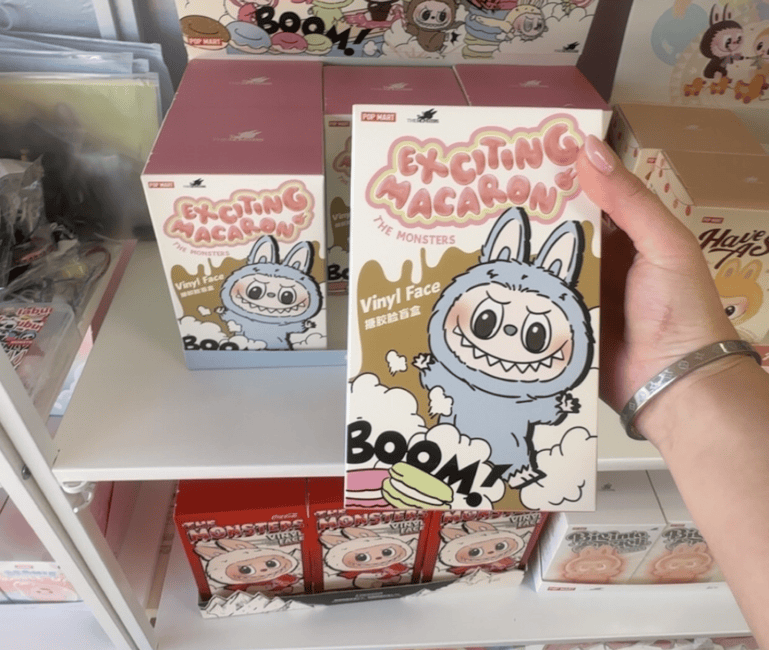When one is walking around Xavier there are trends that always stand out. Whether it’s novel headbands, water bottles or lunch bags, there’s consistently something new. However, something different has recently caught my attention: Labubus.
Fuzzy, popular and mischievous, these creatures are often questioned whether or not they are just cute toys or perhaps something more sinister.
Kasing Lung created the popmart doll, Labubu, in 2020, after his book “The Monsters” series. Labubus features Norwegian mythological tales that Lung learned while growing up in the Netherlands. The ambiguous storyline of the creature creates confusion: Are they a force for good or evil?
Sophomore theology teacher Geoffrey Stricklin states that kids need toys to play out life. “However, this idea of good versus evil is confusing in the realm of Labubus, because there is no good or evil to be played out,” he said. “We are left to our own conclusion.”
From the perspective of Sister Theresa Trang, they are neither demonic or necessary for blessing. “I believe we as Catholics can observe trends but don’t idolize them, such as the Labubu,” Trang stated.
The fear of idolatry is something that Trang and Stricklin both agree on. Both theology teachers Kaiti Lynn-Beazley and Danielle Lambert believe that this idea is not necessarily specific to Labubus. “I suppose you could make a water bottle an idol if you really wanted to,” Lambert said.
Beazley’s words especially resonated with me. “We sometimes give the devil too much credit,” Beazley says. Her cautionary perspective reminds me that if we look for evil in everything, we will find it.
Through social media, however, this argument becomes very different. As we know, the internet typically overanalyzes harmless trends, turning something such as a collectible toy into an argument regarding morality. Such a deeper dive is not necessary for superficial ideas and only creates confusion for everyone else.
The morality debate of items is something that we have seen before. For example, when Universal released the movie “Wicked,” several critics online claimed that the film promoted witchcraft and, therefore, should be avoided. However, the storyline displays beautiful themes which actually reflect how Catholics are called to live.
Beazley, an older Gen Z member, admitted that this Labubu trend has caught on to her own friend groups. “I think they are cute, silly and fun,” she told me.
Lambert, Stricklin and Beazley all had similar first impressions. Lambert and Stricklin thought of “Where the Wild Things Are,” while Beazley saw more of a Troll doll or Furby. All of the theology teachers, including Trang, agreed that the creatures seemed creepy at first, almost uncanny but still somehow cute.
That poses an interesting inquiry: Why do humans become fascinated with things that aren’t beautiful? Trang suggested it may have something to do with psychology.
I decided to do my own research. Eric Askeric wrote in a Medium essay, “The Beauty of Ugly and Cute,” that creatures who balance the eccentric and the pleasant often trigger humor, affection and even some nurturing instincts.
Zaria Gorvett reported in a 2023 BBC Future article, “Why do We Love Ugly Animals?” that people are often drawn to imperfection found in animals because it sparks curiosity and empathy instead of rejection.
This captivation with “ugly-cute” ultimately helps us understand why something odd-looking such as the Labubu can so quickly become a primal piece of pop culture.
What fascinates me most is how this toy has unexpectedly opened doors to spiritual growth. Beazley pointed out that TikTok is filled with videos of people bringing their Labubus to priests for blessings.
“This is so interesting because it seems in the past that if something might be demonic, people would just ignore it,” she said. “But now they are going to their priests and getting them blessed.”
I find the blessings of the Labubu genuinely surprising. Not only has the debate over these toys given the Catholic Church more popularity online, but it also created funny moments where priests and young people interact over something so amusing.
What started as a peculiar toy craze may now be uniting Catholics more than anyone expected, one Labubu blessing at a time.









